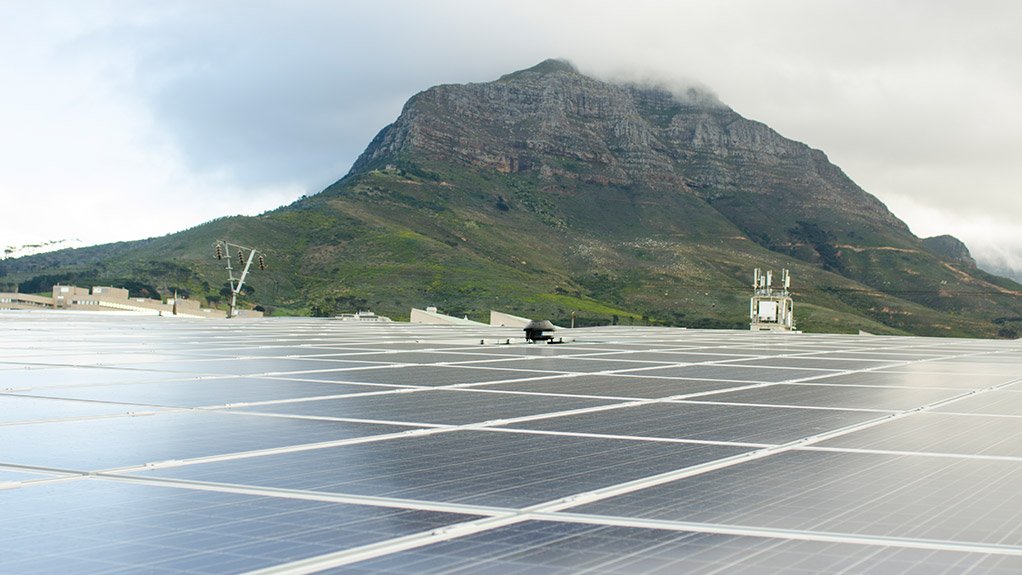‘Blanket deviation’ does not exempt 1 MW to 10 MW projects from licensing process – Nersa
The National Energy Regulator of South Africa (Nersa) is ready to consider licence applications for small-scale embedded generator (SSEG) plants between 1 MW and 10 MW in line with the “blanket deviation” from the Integrated Resources Plan (IRP) provided by former Energy Minister Jeff Radebe in a letter delivered to it on May 2.
All such facilities remain subject, however, to the regulator’s normal licensing procedure, which includes a public participation process.
Speaking at a well-attended workshop in Pretoria on Friday, Nersa electricity licensing, compliance and dispute resolution head Dennis Seemela reiterated that Radebe’s letter did not direct the regulator to automatically approve licence applications.
Nevetheless, it did open the way for Nersa to consider applications in line with the Electricity Regulation Act’s stipulation that applicant projects either be in compliance with the prevailing IRP, or have secured Ministerial approval to deviate from that IRP.
The outdated IRP 2010-2030, which remains in force, has no specific allocation for SSEG projects, while the draft IRP 2019, which is currently serving before the National Economic Development and Labour Council, envisages a yearly allocation of at least 500 MW.
The allocation could, however, be higher during the first few years of the new IRP coming into force, given that SSEG projects are seen as the cheapest and quickest way to close South Africa’s immediate power supply deficit.
Seemela told workshop participants that Nersa had interpreted the Minister’s letter as being applicable within a yearly allocation threshold of 500 MW, in line with the allocation outlined in the draft IRP.
Nersa was also still considering what selection mechanism or criteria it would apply should it receive licence applications in a single year exceeding the 500 MW threshold.
Nersa had designed a generation licence application form to guide applicants on the information required, including: a description of the applicant; evidence of administrative ability; evidence of permitting, including environment and land permits; technical information and analysis; financial information and analysis; economic information and analysis; and regulatory and legal analysis.
Seemela stressed that no technology had been specified and the regulator could, thus, consider licensing any project so long as they were within the 1 MW to 10 MW range.
Projects with a size greater that 10 MW were not covered by the blanket deviation and would, thus, have to seek a separate Ministerial deviation to be considered for licensing.
The regulator also used the workshop to provide insight into the registration process it was currently following for SSEG projects below 1 MW in size.
Registration continued to be carried out in line with a 2017 Licensing Exemption and Registration Notice that is widely accepted to be flawed and is in the process of being updated.
Nersa’s public comment period on the updated notice closed on May 31, but a revised registration process would only be implemented once Mineral Resources and Energy Minister Gwede Mantashe published the new notice, following receipt of the regulator’s concurrence.
Nersa indicated that about 51 SSEG projects, with a combined capacity of about 7 MW, had been registered to date. Seemela also insisted that no project should begin operating prior to having been registered with Nersa.
“Nersa is only able to implement policy . . . [and] as things stand, that means that we can register facilities up to 1 MW in size in line with the exemption notice published on November 10, 2017, and we can license facilities between 1 MW and 10 MW based on the letter we received from the Minister of Energy on May 2,” Seemela concluded.
Comments
Press Office
Announcements
What's On
Subscribe to improve your user experience...
Option 1 (equivalent of R125 a month):
Receive a weekly copy of Creamer Media's Engineering News & Mining Weekly magazine
(print copy for those in South Africa and e-magazine for those outside of South Africa)
Receive daily email newsletters
Access to full search results
Access archive of magazine back copies
Access to Projects in Progress
Access to ONE Research Report of your choice in PDF format
Option 2 (equivalent of R375 a month):
All benefits from Option 1
PLUS
Access to Creamer Media's Research Channel Africa for ALL Research Reports, in PDF format, on various industrial and mining sectors
including Electricity; Water; Energy Transition; Hydrogen; Roads, Rail and Ports; Coal; Gold; Platinum; Battery Metals; etc.
Already a subscriber?
Forgotten your password?
Receive weekly copy of Creamer Media's Engineering News & Mining Weekly magazine (print copy for those in South Africa and e-magazine for those outside of South Africa)
➕
Recieve daily email newsletters
➕
Access to full search results
➕
Access archive of magazine back copies
➕
Access to Projects in Progress
➕
Access to ONE Research Report of your choice in PDF format
RESEARCH CHANNEL AFRICA
R4500 (equivalent of R375 a month)
SUBSCRIBEAll benefits from Option 1
➕
Access to Creamer Media's Research Channel Africa for ALL Research Reports on various industrial and mining sectors, in PDF format, including on:
Electricity
➕
Water
➕
Energy Transition
➕
Hydrogen
➕
Roads, Rail and Ports
➕
Coal
➕
Gold
➕
Platinum
➕
Battery Metals
➕
etc.
Receive all benefits from Option 1 or Option 2 delivered to numerous people at your company
➕
Multiple User names and Passwords for simultaneous log-ins
➕
Intranet integration access to all in your organisation





















